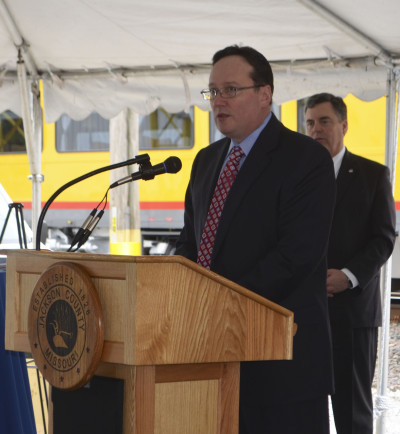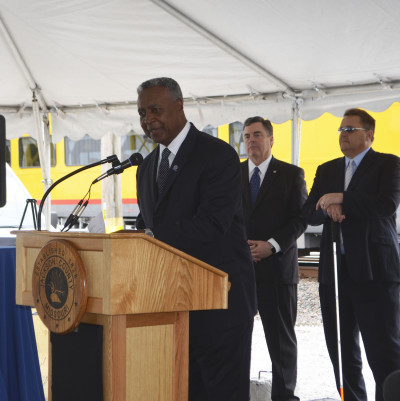
Northeast News
May 2, 2016
KANSAS CITY, Missouri – Jackson County’s long-awaited acquisition of the 17.7 mile Rock Island Corridor was completed on Monday, May 2 – right here in the Historic Northeast.
Jackson County Executive Frank White and others gathered at Neff Yard (6400 Martin Ave.) on Monday for a signing ceremony that completed a deal to acquire the corridor, previously owned by Union Pacific. The County Legislature had approved $52 million in bonds for the purchase last month. The balance of those bonds will be paid off through a partnership between the county and the Kansas City Area Transportation Authority.
The acquisition paves the way for the county and the KCATA to eventually connect Missouri’s KATY trail all the way from Kansas City to St. Louis. In the meantime, the partners plan to turn the Rock Island Corridor into a bicycle trail. Ultimately, the purchase is seen as a stepping stone towards the development of a multi-modal regional transportation system.
“Days like today don’t come easy. They take years of persistence, years of hard work. But the potential for this project is enormous,” said former County Executive Mike Sanders, a longtime champion of the Rock Island Corridor purchase. “It has the potential to change the entire way our community works, the entire way our community lives, and the entire way that we move for generations to come.”
According to Jackson County and the KCATA, some 56,000 residents and 25,000 jobs are located within one mile of the Rock Island Corridor. The project partners further project that thanks to the planned trail development, property values will increase by $45 million for residents within a quarter-mile of the corridor.
Jackson County Executive White estimated that the trails alone will bring $1.3 million in economic activity every year.
“Those 17.7 miles will eventually connect residents and businesses of Eastern Jackson County and allow them to move from place to place like never before,” said White. “This project is an investment in our county, in our residents, and our businesses.”





















